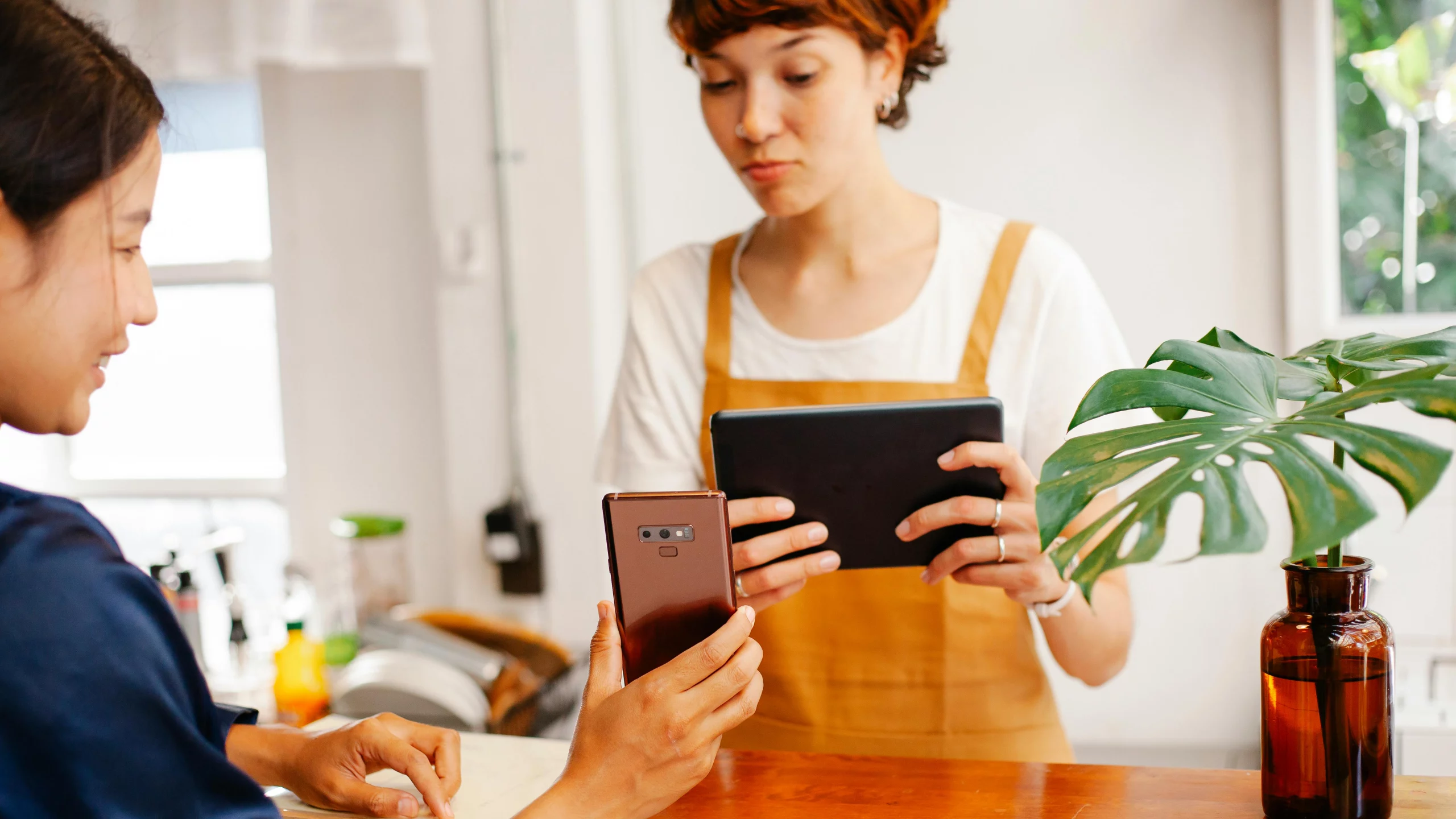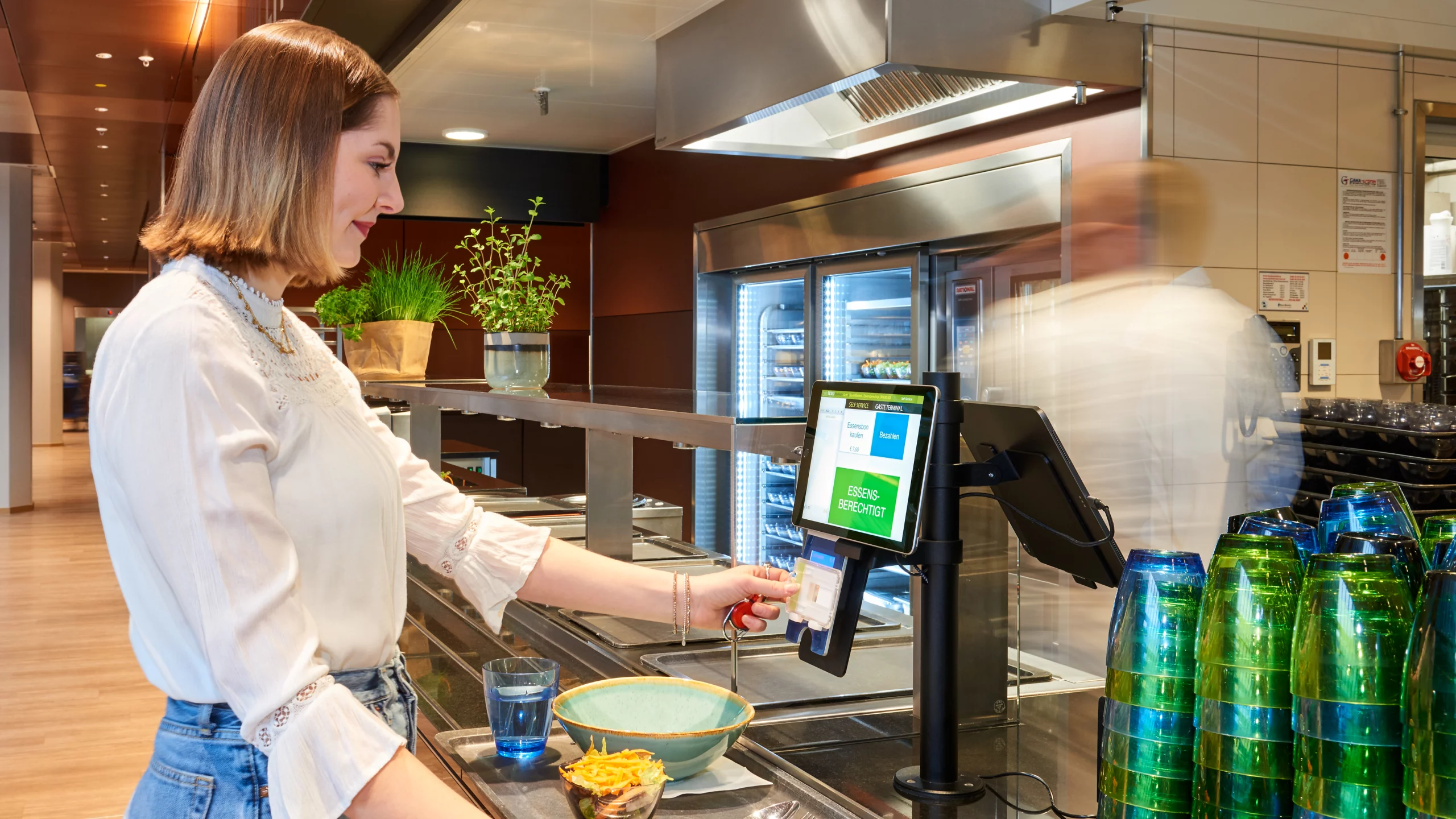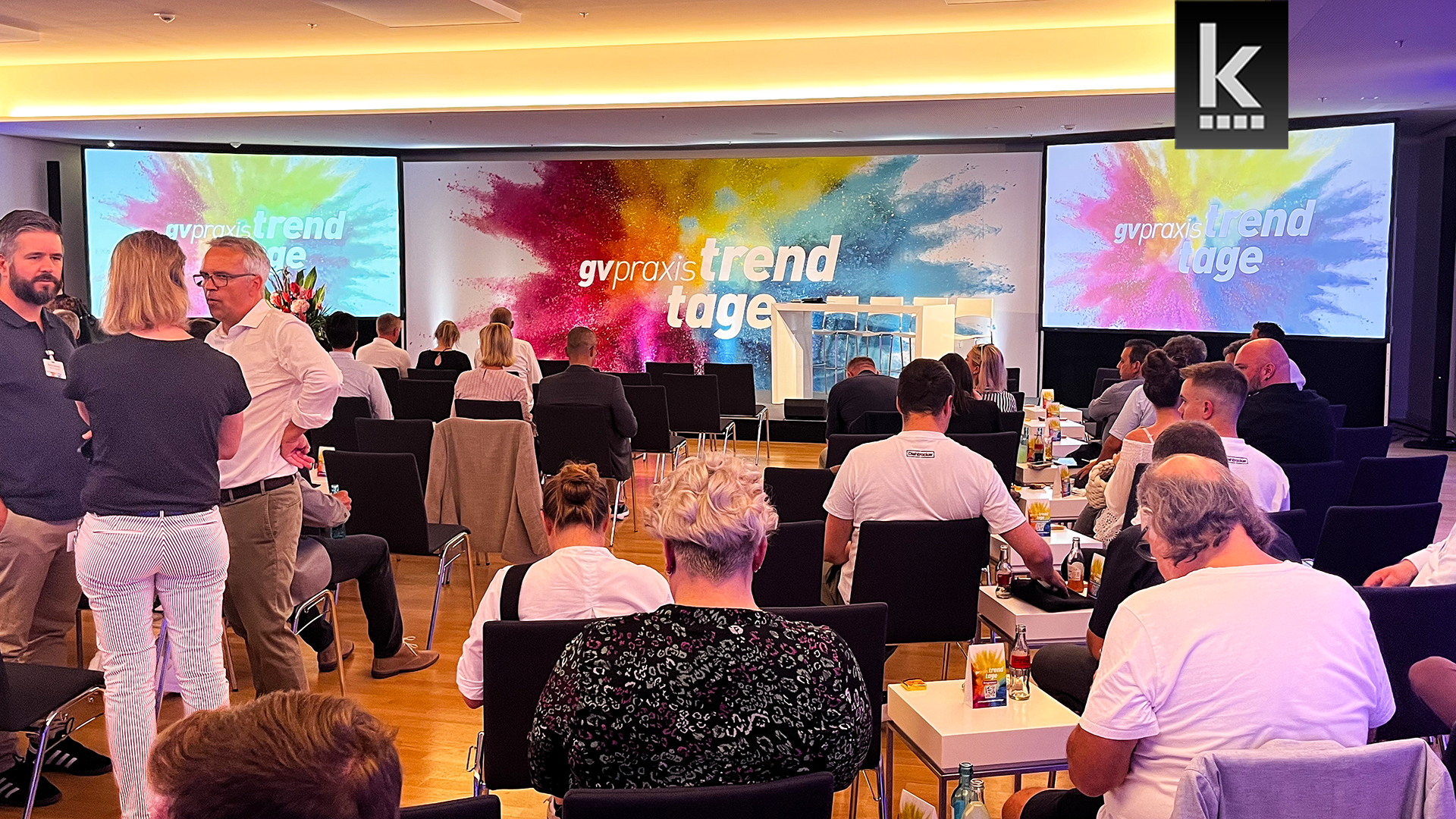Communal catering is on the upswing again - at least that was the mood during the gvpraxis Trend Days, which took place in Mainz at the beginning of June. But it was also clear that the challenges remain.
First and foremost is the shortage of staff: from specialists to temporary staff, it is becoming increasingly difficult to fill vacancies. This can ultimately lead to the range of services being restricted, opening hours being shortened and services suffering. But something good can also come out of this need: The "Smart Serve" concept combines digitalization with intelligent offer planning. A gastronomy concept that allows 6 employees to effortlessly cater for up to 500 guests - less is more after all.
Check-In as a digital framework
The basis for Smart Serve is the check-in concept. Guests pre-order their meal via the lunch app. In the company restaurant, a QR code is scanned when entering or taking a seat. This informs the staff of the guest's presence and preparation can begin. Once the meal is ready, the guest collects it from the serving counter or it is served to them at their seat by the service staff or robot.
Unbeatable staffing ratios with intelligent offer planning
Smart Serve also includes intelligent kitchen and range planning. By reducing to small, efficient kitchens, for example, a lot of space and corresponding investment costs can be saved. "Less is more" also applies to the offer! By carefully selecting the range, food can be provided more quickly - variety is maintained through toppings.
If all processes - from the ordering process to kitchen planning to the offer - are coordinated, an unbeatable staffing ratio is achieved. Industry experts estimate that up to 500 guests can easily be catered for with three employees in the kitchen and three in service. The highlight on top: guests can be served their food at their table just 3 minutes after entering the restaurant!
Self-service area for spontaneous purchases and 24/7 catering
In addition to the Smart Serve concept, there is also a self-service area: vending machines, smart fridges, self-service stores or autonomous stores. They all ensure spontaneous purchases and extend the opening hours of the company restaurant - up to 24/7 catering. Guests also place their orders in the self-service area via the lunch app: they only need one tool to be catered for in the canteen of the future.
Conclusion: Smart Serve is changing communal catering
The canteen of the future is the promising overall concept for company catering: digital ordering processes, intelligent offer planning and efficient use of space allow a small team to effortlessly cater for several hundred guests - within a few minutes and with table service! Guests order via smartphone: a QR code is scanned on arrival at the restaurant and preparation begins. The menu is carefully selected and variety is achieved through toppings. The food is served to the guest after just 3 minutes. A self-service area rounds off the concept and allows 24/7 catering.


